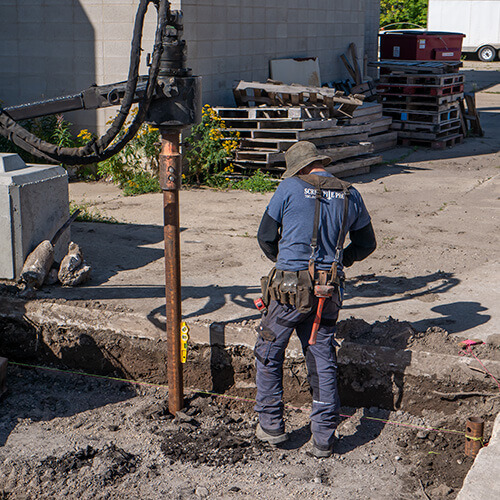Helical screw piles are a type of deep foundation that may be quickly installed with little noise and vibration. Similar to how a screw is put into wood, a screw pile is wound into the ground. Screw piles are made from a steel shaft with a helical blade attached to one end. The blade, more commonly referred to as the “helix,” is what is turned into the soil and transfers the load on the pile’s shaft into the earth
Are Screw Piles Any Good?
Screw pile deck foundations may be installed rapidly and with little disruption to the surrounding region, which is one of their main advantages. Since no excavation is necessary for the installation process, there is no need to remove a significant amount of dirt or disturb any already-existing landscaping. The less invasive installation, along with a calculable load, is a capacity helical screw pile south of other foundation alternatives.

Do screw piles outperform concrete piles?
From excavation to concrete drying, it takes a lot of personnel and heavy machinery to install concrete vs. helical piles. The ability to reach down into the soil that offers the best stability is another big benefit of screw piles over concrete. Helical screw piles outperform concrete piles because they do not frost heave or crack. Once a concrete pile cracks, it allows moisture to get inside the concrete. Once inside, it will eventually freeze and expand, causing damage to the concrete pile and the supported structure. Screw piles are made from steel; do not do this.
What’s the lifespan of a screw pile?
On average, through the many different applications of helical screw piles, a certified screw pile fabricated and installed in compliance with the Alberta Building Code will last for about 75 years before it requires maintenance or replacement. The greatest environmental factor that limits the life of helical piles is the acidity of the soil in which the piles are installed. Acidic soils with a higher than average moisture content will cause the steel of the screw piles to rust. Fortunately, screw piles are engineered with an extra thickness of material called sacrificial material. Meaning, this material will have to completely rust away before the pile can even begin to lose any structural load-bearing strength.
How deep should screw piles be?
Depending on the needs of the project, screw piles can range in depth from 8 feet to over 30 feet. The specifications will outline the pile’s required load capacity. The resistance of the helix turning through the soil will indicate if a pile has been installed deep enough to hold the required amount of weight. When the applied torque indicates that the minimum stipulated pile capacity has been reached, the screw piles are installed.
Can you remove screw piles?
Simply ‘unscrewing’ your screw piles from the ground will remove them. With the same screw pile machine that initially installed the helical pile, it can be turned in the opposite direction. It’s a very simple process when employing screw pile installation equipment. You simply take off the piles’ steel covers, fasten the tool, and let the machine do the work.


